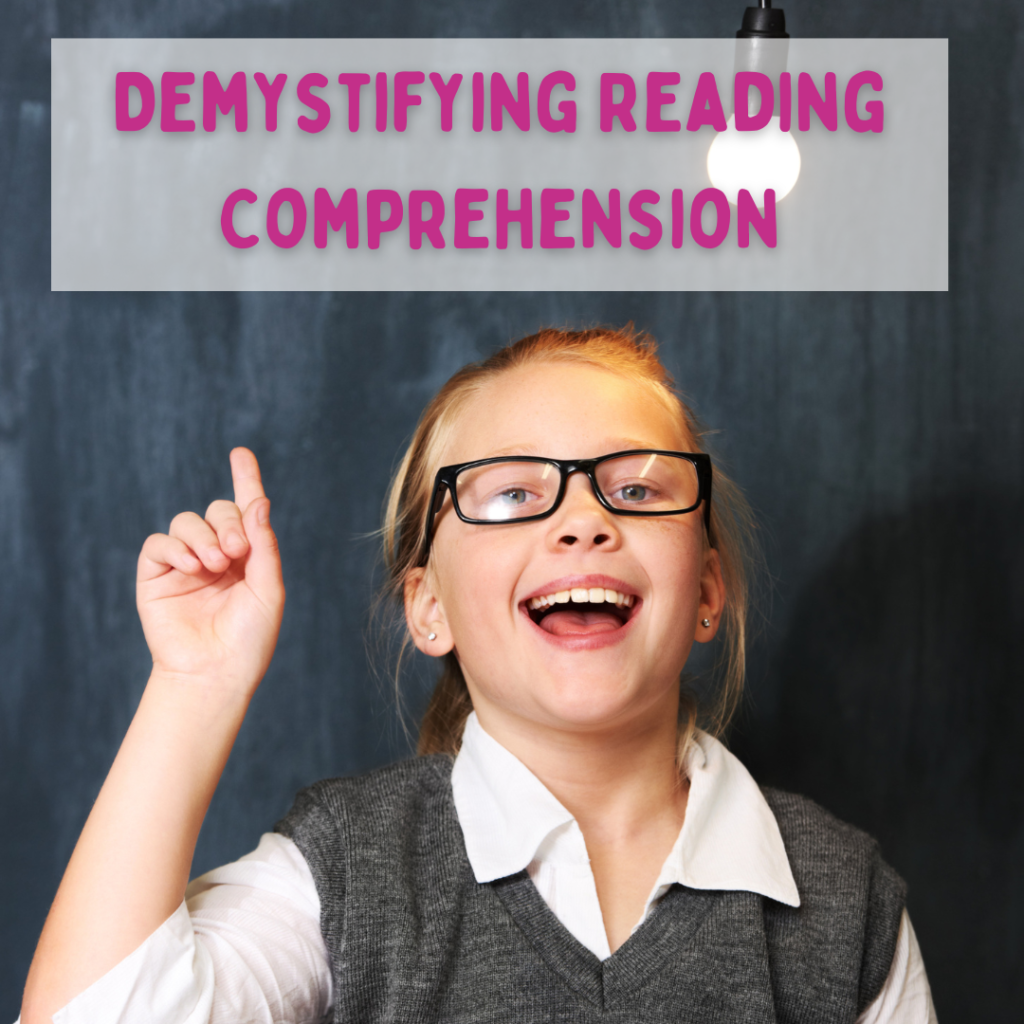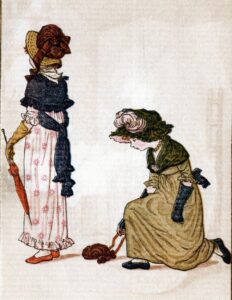Demystifying Reading Comprehension

Demystifying Reading Comprehension – How do I know if my child understands what they read?
Comprehension can often be a sticking point with lots of parents. You read with your child everyday, you listen to them sound out words, maybe they’re even reading sentences, but you’re not sure if they really understand what they’ve read. Maybe their teacher has told you they need to focus on their comprehension, but you’re not sure how.
I’ve got you!
As a teacher, I often worked with children who could read the words, but needed to focus on their understanding, inference skills and identifying specific words in the text. Blending letters together is completely different from understanding what you read!
That’s why I’ve put together this blog going over the different levels of comprehension for a child under 7, and giving examples of how you can use questions to understand exactly where your child is in their understanding.
Blank’s Levels of Questioning – Comprehension broken down
While comprehension is a very broad topic, it can be useful to look at it in terms of questions and answers. If your little one can answer these questions, they understand what they’ve read, or what has been read to them. Blank, Rose and Berlin conducted a study based around comprehension and questioning that can be broken down into four different levels.
These levels start with concrete questions and answers such as pointing at a picture and asking “what is this?” and goes on to include abstract questions such as “How could we fix it?”. By Year 1, the average child should be able to answer questions on all 4 levels, though they might find inferencing and abstract questions need a bit of guidance!
Under 3 – Level 1 comprehension – Look for it!
These are questions where the answer is literally right in front of your child. They don’t have to do any deep thinking, they only have to understand what you’ve asked and point it out. This can be done with really little children and not just with reading! It involves using your eyes more than anything and so can be done by looking at pictures, around the house or outside. It doesn’t even require a book!
There are 4 subsections to this level.
- Matching objects
- Naming objects
- Imitating a sentence
- Recalling objects or information
Essentially, you ask your child a simple question, they find the answer and respond! Some examples are:
- Can you find a ___?
- What is this?
- Can you spot the ____?
- How many ____ were there?
- What do you see?
- What did you see?
- What did I say?
- Repeat after me.
3-4 – Level 2 comprehension – Look and think!
Moving on slightly from Level 1, now your child needs to think a little bit about what you’ve asked. Children should develop this ability around the age of 3 and it’s the first step towards thinking more deeply. You child needs to focus on the question a little more and identify what you’re asking for. It might include identifying objects by their characteristics, describing something, recalling information or identifying differences.
The answer is still easy to find, but there’s an added step! Again, these don’t only have to be applied to a book. You could ask them throughout the day!
- Find something that is red
- find something that you drink from
- find something that is round and yellow (two characteristics)
- find a vegetable
- find an animal
- What is happening right now?
- What happened in the story?
- What did the boy do?
- What is the mum doing?
- How are the dogs different?
- Can you finish a sentence? I like…
4-5 – Level 3 comprehension – Using clues
Instead of the answer being right there, this level requires your little one to think for themselves and use clues from the book to think of their own answer. It’s the first step towards inferring what the author might be thinking of. They might take on the roll of another and describe how they’re feeling or predict what will happen next. These questions don’t need specific answers but do require your child to be a little inventive!
Talking about stories and events can happen anywhere, though it can be harder to do when following a story, so challenging your child to do these is an excellent step! Following instructions are also included in this level of comprehension, so it’s a good chance to challenge your child to do so, even if they (like most children) don’t want to!
- What do you think will happen next?
- How might she fix it?
- What do you think they are going to do?
- Put on your shoes and get your scarf.
- Drink your milk and then you can have an apple.
- How do you make a sandwich?
- How do you brush your teeth?
- How did they solve the problem?
- How are these children the same?
- Find something that is not green.
- Find one that does not have leaves.
- What is a ____?
5+ – Level 4 comprehension – Developing opinions
Now we start to encourage our children to develop reasoning skills, particularly, reasoning about their own opinions and explaining them to others. This is so important, not just in comprehension, but in life. Encouraging our children to explain why they think something enables them to communicate more thoroughly with those around them, and explain their views. This can help in the playground, the classroom and the home, leading to more confident children!
This level of comprehension requires higher level problem solving which is why it may take some children longer to develop this. Blank Rose and Berlin found that only 65% of 5 year olds could answer this level of questioning. It focuses on making predictions, explaining thought processes and coming to logical solutions.
- What will happen if ___?
- What do you think will happen if _____? Why?
- Why wouldn’t that work?
- Why can’t you cut bread with a spoon?
- Why can’t you cut down a tree with a straw?
- What made that happen?
- Why did that happen?
- How could they have done it differently?
- What would you do?
- How can you solve this?
- How can you tell he is happy?
- What word tells you she is sad?

Putting these into practice
Have a look at the picture above. In the story, the girl with her back turned has dropped her purse. Using the same picture, we can ask questions at all 4 levels.
- Level 1 – Can you see an umbrella?
- Level 2 – Find something that is blue.
- Level 3 – What do you think will happen next?
- Level 4 – What would you do?
Hopefully this shows how you can use different levels of questioning with any level of reading! If you have a child that finds reading harder, or hasn’t started to learn letters yet, you can still encourage their comprehension.
Final thoughts
Comprehension helps our children develop critical thinking skills that support them throughout their lives, not just in reading. Whatever stage of comprehension your child is currently at, asking questions and encouraging your child to expand on their answers is a valuable way of developing these skills.
I hope I’ve managed to give you some ideas for how to extend their learning! If you’ve enjoyed reading this, maybe check out one of my other blog posts, or click on the socials links below to be taken to my social media pages!
If you want to support your child further and get more individualised support for both you and your family, check out my course – Curious to Confident – where you can learn about the pillars of reading, become confident that you know where your child is in their reading journey, ensure you’re getting the most out of reading with your child, and how to fit learning into your day with no extra preparation needed from you. Check it out!

Comments
3 responses to “Demystifying reading comprehension”
[…] If you’d like more help with comprehension skills, you can check out this blog – demystifying reading comprehension. […]
[…] In real terms, at this point a child might well be considered a ‘free reader’ in that they can feasibly pick up any book and read it. They might begin reading in their head and will be comprehending what they read much more quickly. This is where we encourage as much comprehension as we can, particularly with inferences! For more information on this, check out my blog on comprehension! […]
[…] like to find out more about what questions to ask to help your child, check out my blog – Demystifying Reading Comprehension – […]